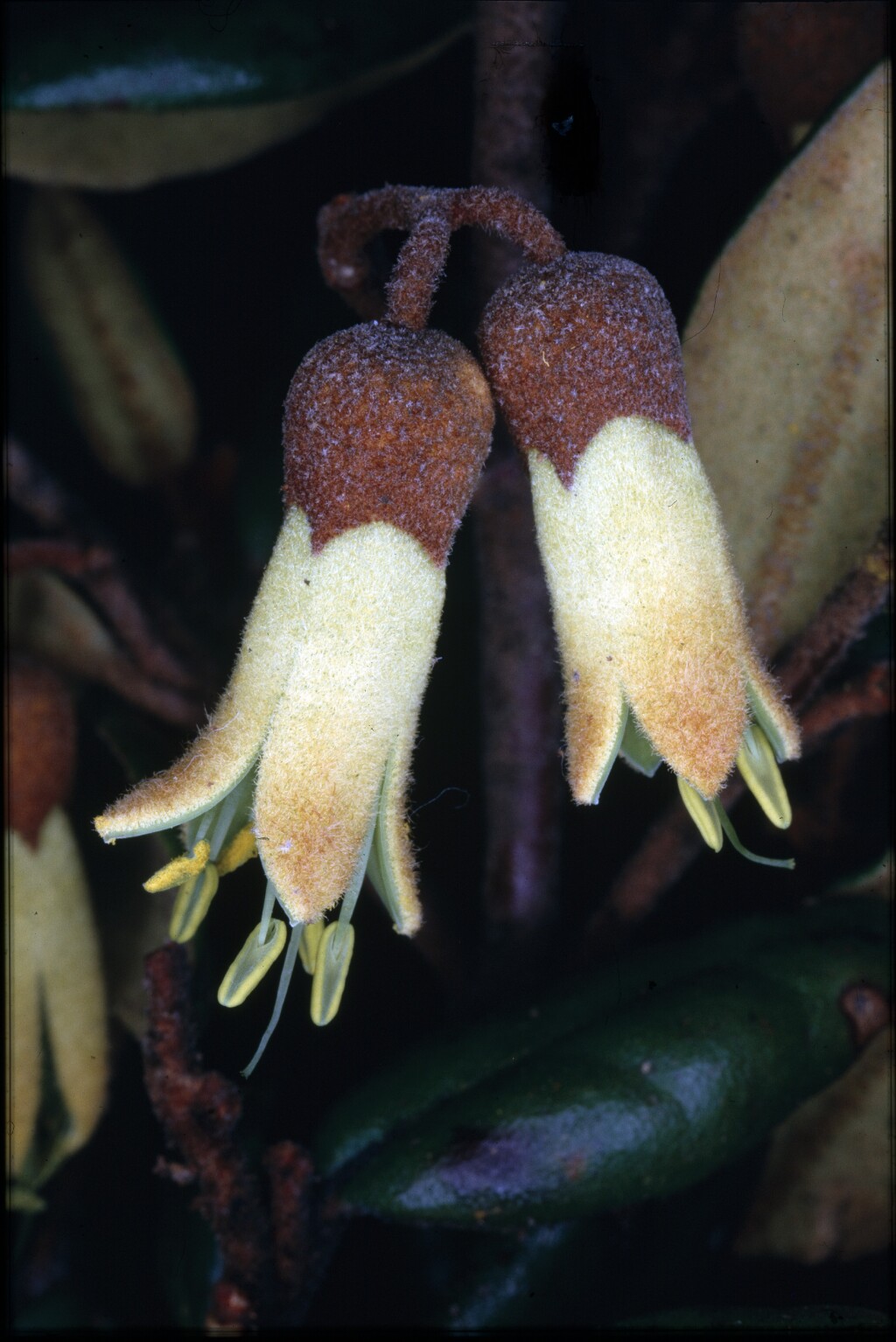Correa lawrenceana
Hook. Mountain CorreaShrub or small tree to 16 m high; stems rusty-floccose. Leaves papery or coriaceous, narrow- to broad-elliptic or ovate, 1.5–12 cm long, 0.7–4 cm wide, apex acute to rounded, base cuneate to cordate, upper surface glabrous or glabrescent and smooth, lower surface glabrous to densely stellate-hairy, margin entire. Inflorescence axillary, or rarely terminal, 1–3(–7)-flowered; peduncle c. 0.5–5 cm long; pedicel 5–10 mm long; bracts normally caducous. Flowers pendent; calyx hemispherical, 3–10 mm, lobes triangular to broad-obtuse or rarely acuminate, green and glabrescent or densely rusty- or fawn-tomentose; corolla cylindric, 16–32 mm long, green-yellow or pink to red, petals fused, indumentum scale-like to velvety, lobes not or hardly spreading, persistent but torn in fruit; stamens exserted to about half the length of the corolla, filaments narrow-linear throughout.
GipP, OtP, WaP, CVU, GGr, NIS, EGL, EGU, HSF, HNF, OtR, Strz, MonT, HFE, VAlp. Also NSW, Tas.
There are seven varieties, four in Victoria; Correa lawrenceana var. rosea Paul G. Wilson, once thought to be in Victoria, is endemic in New South Wales.
Duretto, M.F. (1999). Rutaceae. In: Walsh, N.G.; Entwisle, T.J., Flora of Victoria Vol. 4, Cornaceae to Asteraceae, pp. 153–197. Inkata Press, Melbourne.
 Spinning
Spinning

